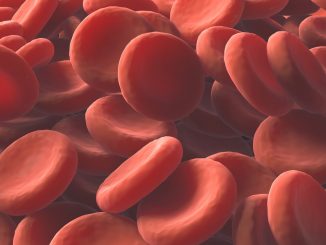
Summary:Noise is often an undesirable phenomenon, for example a recorded conversation in a noisy room, astronomical observations with large background signals or in image processing. A research team has now demonstrated that noise can induce spatial and temporal order in nonlinear systems. This effect may be used in the future to identify signals that are hidden in a large amount of noise.
Noise is often an undesirable phenomenon, for example a recorded conversation in a noisy room, astronomical observations with large background signals or in image processing. A research team from China, Spain, and Germany has demonstrated that noise can induce spatial and temporal order in nonlinear systems. This effect may be used in the future to identify signals that are hidden in a large amount of noise. Inversely, signals may be embedded in a noisy background and thereby be ciphered in order to recover them later.
The results were published in two manuscripts back-to-back in Physical Review Letters, one focusing on the experimental investigation [121, 086806 (2018)], while the second one presents the theoretical investigation based on numerical simulations [121, 086805 (2018)].
Noise is usually an annoyance to be avoided and minimized for practical applications. However, sometimes it plays a constructive role that can be exploited to produce useful results. Applying noise in combination with small-amplitude periodic oscillations to a nonlinear system can result in very intricate effects. Noise can drive a stationary system into an oscillatory state with coherent current self-oscillations having tunable frequencies between zero and about 100 MHz, which is called a coherence resonance. By adding to the noise small-amplitude periodic oscillations with a frequency close to that of the current self-oscillations, the nonlinear system can be phase locked to the coherence resonance, which is referred to as a stochastic resonance. This stochastic resonance can be used as a passive lock-in amplifier, without a reference signal and with a much shorter integration time than available for conventional lock-in amplifiers. Until now, all methods detecting weak signals are actively based on the correlation with a known reference signal, and it is impossible to identify unknown signals hidden in a background with strong noise. Typical lock-in amplifiers need a reference signal in the tens of Hz to MHz range and integration times of the order of milliseconds. The wide frequency range of the coherence resonance allows for the operation without any reference signal and to extraordinarily reduce the integration time necessary to process the signal.
The research team has experimentally demonstrated the occurrence of coherence and stochastic resonances at room temperature in a doped, weakly coupled GaAs/(Al,Ga)As superlattice with 45% Al. Numerical simulations of the electron transport based on a discrete sequential tunneling model carried out simultaneously reproduce these results qualitatively very well. In addition, the theoretical model can be used to determine the device-dependent critical current for the coherence resonance directly from the ex-perimental results.
More: Science Daily







Leave a Reply
You must be logged in to post a comment.